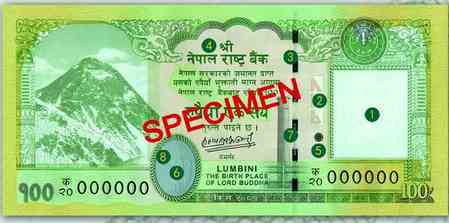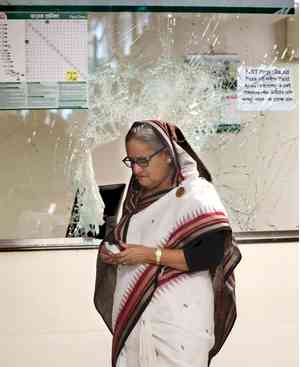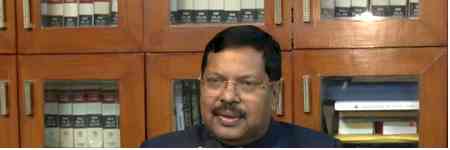Nepal brings banknotes showcasing disputed land with India into circulation
Nepal's Central Bank has brought new 100-rupee-denominated currency notes that showcase the disputed lands of Kalapani, Lipulekh, and Limpiyadhura — claimed by both Nepal and India — into circulation starting Thursday.

Kathmandu, Nov 27 (IANS) Nepal's Central Bank has brought new 100-rupee-denominated currency notes that showcase the disputed lands of Kalapani, Lipulekh, and Limpiyadhura — claimed by both Nepal and India — into circulation starting Thursday.
Five years after the Himalayan republic revised its political map to include these disputed areas, the country's Central Bank has, for the first time, issued banknotes featuring the updated map.
The new map of Nepal is placed at the center of the note. Nepal Rastra Bank (NRB) spokesperson Guru Prasad Paudel said that the map on the 100-rupee note had been updated as per the government’s decision.
"After 300 million pieces of 100-rupee notes containing these areas were delivered by China Banknote Printing and Minting Corporation, we brought them into circulation," he said.
After India released a new map in 2020 including these disputed regions, Nepal responded by issuing its own map incorporating these areas as part of its territory. During the tenure of then–Prime Minister K P Sharma Oli, Nepal even amended its Constitution to officially declare the area as belonging to Nepal. Relations with India, which had already cooled, grew even more strained thereafter.
The region lies along the northwestern border between Nepal and India’s Uttarakhand state. Several rounds of talks in the past have failed to resolve the boundary dispute, which remains one of the persistent irritants in bilateral relations.
Nepal Rastra Bank issues banknotes denominated in Nepali rupees (NPR) — 5, 10, 20, 50, 100, 500, and 1,000 — but only the 100-rupee note contains the country’s map. The map has now been updated only on the 100-rupee note, the Central Bank said.
Apart from the new map, the color and size of the banknote remain unchanged. On the left side of the note is an image of Mount Everest, the world’s highest peak, and on the right is a watermark of the rhododendron.
At the center of the note is an image of the Ashoka Pillar along with the inscription "LUMBINI, THE BIRTHPLACE OF LORD BUDDHA". Next to the Ashoka Pillar is a black tactile mark to help visually impaired individuals identify the note by touch. On the left side, an image of Maya Devi, the mother of Lord Gautam Buddha, is placed inside an oval-shaped silver metallic ink.
--IANS
scor/as


 IANS
IANS 










